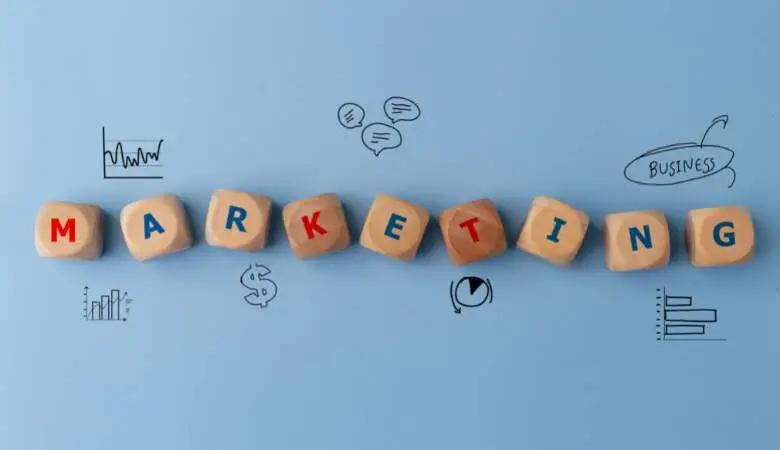
Creating effective marketing materials is a significant challenge for any company that wants to stand out in a competitive market.
Indeed, these communication tools aim to capture the attention of your target audience and memorably convey your message.
Each medium requires a strategic approach, whether brochures, websites, promotional videos or social media posts.
What you need to remember about effective marketing materials for business:
The first fundamental step in creating impactful marketing materials is clearly defining your objectives. You must determine precisely what you want to accomplish with your communication tools. Do you want to increase your notoriety, generate qualified leads, retain existing customers, etc.?
Each goal requires a specific approach that influences the design of your media. An advertising roll-up, for example, can be an effective tool to increase your visibility during events. Once your goals are established, focus on defining your target audience. This step is essential to create media that resonates with your potential customers.
Analyze your audience’s demographics, interests, and behaviours. This information lets you personalize your message and choose the most appropriate distribution channels.
Choosing the right marketing media is crucial to the success of your communication strategy. Each media type has its advantages and is suitable for specific objectives. It is, therefore, essential to select those that best align with your goals and the preferences of your target audience.
Printed materials such as brochures and flyers offer a unique tactile experience. They are particularly effective for face-to-face presentations or trade shows. These tools allow your potential customers to keep a physical record of your business. As for digital materials, they offer unmatched flexibility and reach.
Your website is the cornerstone of your online presence. It serves as a virtual storefront and information hub for your customers. Social media, newsletters, and blogs round out your digital arsenal by fostering engagement and interaction with your audience. Also, remember that audiovisual media is growing in popularity thanks to its ability to capture attention.
Promotional videos, podcasts, and webinars allow you to convey complex information engagingly and memorably. These formats are ideally suited to this era of multimedia content.
Creating a solid and consistent visual identity is fundamental to your impactful marketing materials. This visual identity encompasses all the graphic elements that represent your brand. It plays a vital role in your target audience’s recognition and memorization of your company.
So start by developing a distinctive logo that embodies the essence of your brand. This visual symbol should be simple, memorable, and versatile to adapt to different media. Also, note that your logo is the anchor point of your visual identity and should reflect the values and personality of your company.
Then, choose a colour palette consistent with the image you want to project. They evoke specific emotions and influence the perception of your brand. You can opt for shades corresponding to your activity sector and your target audience’s expectations. Above all, limit yourself to 3 colours at most to maintain visual consistency.
Creating impactful, personalized content is the heart of your marketing materials. This content must captivate your audience’s attention, clearly convey your message, and inspire action. To achieve this, focus on the quality and relevance of your information. Start by developing a unique tone of voice that reflects your brand’s personality.
In addition, this communication style must remain consistent across all your media to reinforce your identity. However, adapt the language level according to your target audience and the distribution channel. You must still structure your content in a logical and easily digestible way. Better still, take care to personalize your content according to the specific needs of your audience. Address your readers directly by using the pronoun “You” and anticipating their questions or objections. This customer-centric approach strengthens the engagement and relevance of your marketing materials.
Optimizing your marketing materials for different distribution channels is essential to maximize their impact.
Indeed, each platform has its own technical and behavioural specificities that must be considered.
A judicious adaptation of your content guarantees an optimal user experience and increases the effectiveness of your communication.
For digital media, make sure your website is responsive. It should display correctly on all devices. Also, optimize page load time to avoid user frustration and improve your SEO.
On social media, adapt the format and tone of your posts to each platform. Instagram favours attractive visuals, while LinkedIn requires more professional content. Also, respect the recommended dimensions for images and videos on each social network. Try to use a high image resolution and appropriate margins for printed materials. You can choose quality papers and finishes that optimally reflect your brand image. ( here )
Testing and refining your marketing materials before launch is critical in ensuring their effectiveness. This phase allows you to identify and correct potential problems, optimize the impact of your message, and ensure that your materials meet the expectations of your target audience.
The advanced analytics is no longer a luxury but a necessity for businesses trying to…
Cybersecurity is something that is being talked about a lot right now. Almost daily we…
We all know that marketing is about identifying and solving the needs of a market…
Buying a second hand laptop can be quite an quest, and there are many times…
Augmented Reality is an immersive technology that enhances product presentation in retail by overlaying digital…
When it comes to shopping, every user turns to Google at one point or another,…